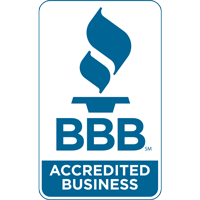
Ceiling fans are one of the most underrated ways to increase home comfort and lower energy costs. By boosting air circulation and supporting your HVAC system, ceiling fans and energy efficiency are truly a perfect combination. They offer a cost-effective, eco-friendly way to keep cool while lessening strain on your AC—even preventing unnecessary air conditioning repair.
In this blog, the experts at Evenaire Heating & Air Conditioning break down how ceiling fans can keep you cool while avoiding energy waste with increased HVAC efficiency. We'll also provide some HVAC efficiency tips that make the most of ceiling fans.
Comfort vs. Temperature: The Effect of the Wind-Chill Effect Indoors
Ceiling fans don’t actually lower the room temperature—they cool you down by increasing air movement across your skin. This is known as the wind-chill effect, and it can make a room feel up to 4 degrees cooler without touching the thermostat. That means you stay comfortable and enjoy the benefits of indoor air circulation from your ceiling fan while relying less on your air conditioner—helping reduce your electric bill in summer.
The Best of Both: Advantages of Pairing Fans and Air Conditioning Together
There are several benefits to using ceiling fans and air conditioning at the same time, especially during the warmer months. By pairing both, you increase HVAC efficiency and keep your home cooler with less work from your cooling system.
Top perks of using ceiling fans and AC together:
- Ceiling fans help lower HVAC load by spreading cool air more evenly around the room. Limiting HVAC stress is important, because it can prevent a breakdown that may lead to premature AC or furnace installation.
- Using overhead fans enhances comfort by reducing uneven temperatures and increasing airflow.
- Pairing ceiling fans and AC can lower your utility usage. If you have a home automation system, you can even fine-tune your smart thermostat settings to set the temperature higher while your ceiling fan is running.
Clockwise vs. Counterclockwise Ceiling Fan Rotation: Which is the Correct Direction?
To maximize the benefits of your ceiling fans year-round, it’s important to make sure the blades rotate in the proper direction for the season. The direction affects how air circulates, which can either make you feel cooler or push warm air downward so you feel warmer.
When it's best to spin ceiling fans counterclockwise
In the summer, ceiling fans should turn counterclockwise at a faster setting. This creates a breeze that moves air toward the floor, increasing the wind-chill effect and creating a cooler sensation.
When to spin ceiling fans clockwise
On cold days, set your fan to rotate clockwise on a gentle setting. This gently pulls cool air upward and draws warm air downward from the ceiling, helping you feel warmer without adjusting your thermostat.
How to Pick Out the Best Ceiling Fan for My Home
Selecting the best ceiling fan depends on a few key factors, including blade design, airflow rating and room dimensions. First, look for fans that have a good combination of ECFM airflow and blade pitch to provide efficient air movement in your home:
- ECFM refers to the amount of air a fan circulates—the cubic feet per minute, or CFM—per watt of electricity it uses. Fans with higher ECFM are the most energy efficient.
- Blade pitch is the tilt of the blades. A sharper blade pitch moves more air than a shallower pitch but can also stress the fan’s motor.
Also, consider room size when sizing a ceiling fan—a fan that’s too small won’t move enough air, while one that’s too large may be too strong for the space.
Boost Your HVAC Efficiency With Help from Evenaire Heating & Air Conditioning
At Evenaire Heating & Air Conditioning, our HVAC experts can help you maintain a cozy home while easing the burden on your heating and cooling systems. From practical fan advice and air conditioning installation to smart thermostats and furnace repair, we offer comprehensive services that fit your lifestyle. Set up your appointment by calling 512-337-4337 today.



